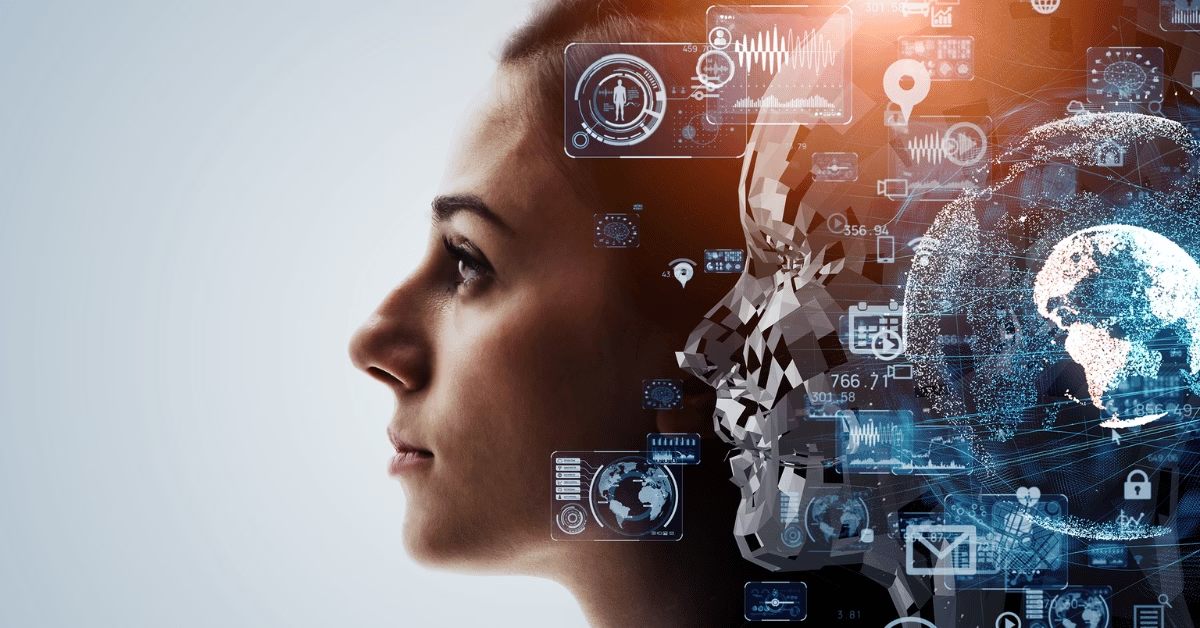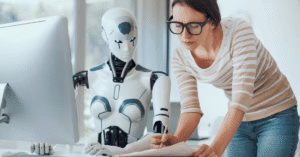Artificial Intelligence (AI) is no longer a distant concept—it’s reshaping industries, automating tasks, and redefining job roles. For business leaders, this raises a critical challenge: future-proofing your workforce to keep employees relevant and resilient in an AI-driven workplace.
Why Future-Proofing Your Workforce Matters
Organizations that fail to prepare employees for an AI-automated world risk losing competitive advantage. Automation can boost efficiency, but without a skilled and adaptable workforce, businesses may face:
- Higher employee turnover
- Skill gaps that slow innovation
- Lower employee morale due to job insecurity
- Missed opportunities in leveraging AI
Future-proofing your workforce ensures employees evolve alongside technology, reducing fears of redundancy while enabling companies to thrive in a digital-first economy.
The Role of AI in the Workplace
AI in the workplace is not simply about replacing people with machines. Instead, it’s about augmenting human capability. From customer service chatbots to AI-driven analytics, automation handles repetitive tasks so employees can focus on higher-level responsibilities like strategy, creativity, and problem-solving.
Industries already being transformed by AI include:
- Healthcare – AI diagnostic tools and predictive analytics
- Finance – Fraud detection and risk management
- Retail – Personalized customer experiences through recommendation engines
- Manufacturing – Predictive maintenance and robotics
- Marketing – Automated ad targeting and content optimization
These shifts demonstrate why preparing employees for AI isn’t optional—it’s essential.
Steps to Future-Proof Your Workforce
1. Embrace Continuous Employee Upskilling
Upskilling is at the heart of future-proofing your workforce. AI may automate some tasks, but it also creates new roles requiring digital literacy, data analysis, and critical thinking.
Ways to encourage upskilling:
- Offer training programs on AI tools, data analysis, and automation software.
- Support microlearning platforms for bite-sized, on-demand learning.
- Provide mentorship opportunities to bridge the gap between experienced staff and tech-savvy talent.
2. Foster a Culture of Lifelong Learning
Employees should not see training as a one-time event but as an ongoing journey. Organizations can create learning-driven cultures by:
- Rewarding employees who pursue certifications or skill development.
- Allowing time during work hours for professional learning.
- Promoting peer-to-peer knowledge sharing.
3. Prioritize Human-Centric Skills
While AI excels at speed and efficiency, it lacks empathy, creativity, and leadership. These “human” skills will be critical differentiators. Focus on strengthening:
- Emotional intelligence
- Adaptability and resilience
- Collaboration and teamwork
- Creative problem-solving
4. Redesign Roles with AI in Mind
Redesigning roles with AI in mind is central to future-proofing your workforce without job losses. For example:
- Customer service agents can transition into AI supervisors, managing chatbots and resolving complex cases.
- Marketing professionals can use AI insights for strategic campaigns rather than repetitive tasks.
- HR teams can leverage AI for recruiting analytics while focusing on employee engagement.
5. Communicate Transparently About AI Adoption
Uncertainty breeds resistance. Leaders should openly discuss how AI will impact jobs, outlining both opportunities and changes. Transparency helps employees feel involved in the transformation rather than left behind.
6. Partner with Educational Institutions
Collaboration with universities and training providers ensures access to cutting-edge skills. Businesses can sponsor learning initiatives, internships, or joint programs that align future talent pipelines with AI-driven needs.
7. Create Flexible Career Pathways
AI’s rapid evolution means some roles may vanish while others emerge. Companies should support internal mobility so employees can transition into new positions instead of leaving the organization.
Common Challenges in Future-Proofing Your Workforce
- Resistance to Change – Employees may fear automation will eliminate their jobs.
- Limited Training Resources – Small to mid-sized companies may struggle to fund large-scale training.
- Skill Gaps – Identifying which skills to prioritize can be complex in fast-changing industries.
- Short-Term Thinking – Some leaders focus on immediate profits instead of long-term workforce resilience.
Overcoming these challenges requires strong leadership commitment, investment in learning, and clear communication.
Benefits of Future-Proofing Your Workforce
Companies that successfully prepare for AI gain multiple advantages:
- Improved Productivity – Employees spend less time on repetitive tasks and more on strategic work.
- Employee Retention – Workers are more likely to stay with employers who invest in their growth.
- Stronger Innovation – Upskilled employees bring new ideas and ways of leveraging AI.
- Competitive Advantage – A future-ready workforce adapts faster to industry disruptions.
Case Study Example
Consider a global retail company adopting AI-powered inventory management. Instead of cutting staff, the company:
- Upskilled employees to analyze AI-generated data.
- Redesigned store roles to emphasize customer experience.
- Created cross-functional teams for AI implementation.
The result: higher employee satisfaction, lower turnover, and improved profitability.
Practical Tips for Leaders
- Start with a skills gap analysis to identify where training is most needed.
- Implement AI literacy workshops for all employees, not just tech teams.
- Build a roadmap that integrates AI adoption with workforce development.
- Celebrate small wins when employees successfully use AI tools in their roles.
Future-proofing your workforce is no longer optional—it’s a business imperative. AI in the workplace is transforming how industries operate, and employee upskilling is the key to thriving in this new environment. By fostering a culture of learning, prioritizing human skills, and embracing change, companies can ensure employees are not replaced by AI but empowered by it.
Organizations that prepare now will not only reduce the risks of disruption but also unlock opportunities for innovation and long-term success. The future of work is already here—the question is whether your workforce is ready for it.
FAQs
It refers to preparing employees with the right skills and mindset to stay relevant in an AI-automated workplace. This includes technical training, adaptability, and human-centered skills.
AI automates repetitive tasks but also creates new opportunities. Employees can shift toward strategic, creative, and people-focused roles instead of routine work.
Upskilling ensures employees can work alongside AI tools instead of being replaced by them. It builds digital literacy, problem-solving abilities, and resilience.
The main challenges include resistance to change, limited training resources, and identifying the right skills to prioritize in a rapidly changing environment.
They can begin with affordable online learning platforms, encourage peer-to-peer training, and focus on developing human skills like adaptability and teamwork.












